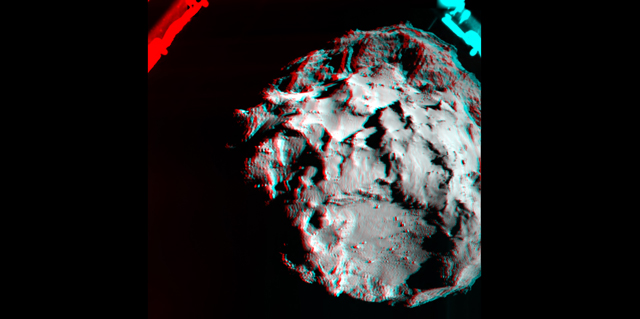Rosetta’s journey to intercept a comet took 4 billion miles and 10 years. When it left Earth, there was no iPhone, no YouTube, no GoPro. The camera now beaming back exclusive comet photos? It has 1/1000 of the storage capacity of a modern USB stick.
The German Aerospace Center (DLR), which is charge of Rosetta’s science activities, today released a new set of photos taken by the Philae probe as it descended toward the comet. But acquiring photos becomes a tad more complicated when you have a very limited amount of memory. Remember, taking into account the time to plan and design a 10-year journey, we’re talking 1990s-era technology here.
“When the camera was developed 20 years ago, memory cards did not exist,” the DLR’s Stefano Mottola said. “ROLIS therefore has a limited amount of memory — just 16MB, which is one thousandth of the amount of data that can be stored on today’s USB sticks.”
We did, after all, land on the moon using a computer not much more powerful than a graphing calculator. But Rosetta — and every long-term space mission, really — has to rely on technology that will be obsolete by launch time, much less after years of space travel. Engineers still had to design every component, pack it up for a 10-year journey through space, and hope that it worked. And for the most part, it did, which is the most impressive part. [German Aerospace Center]
